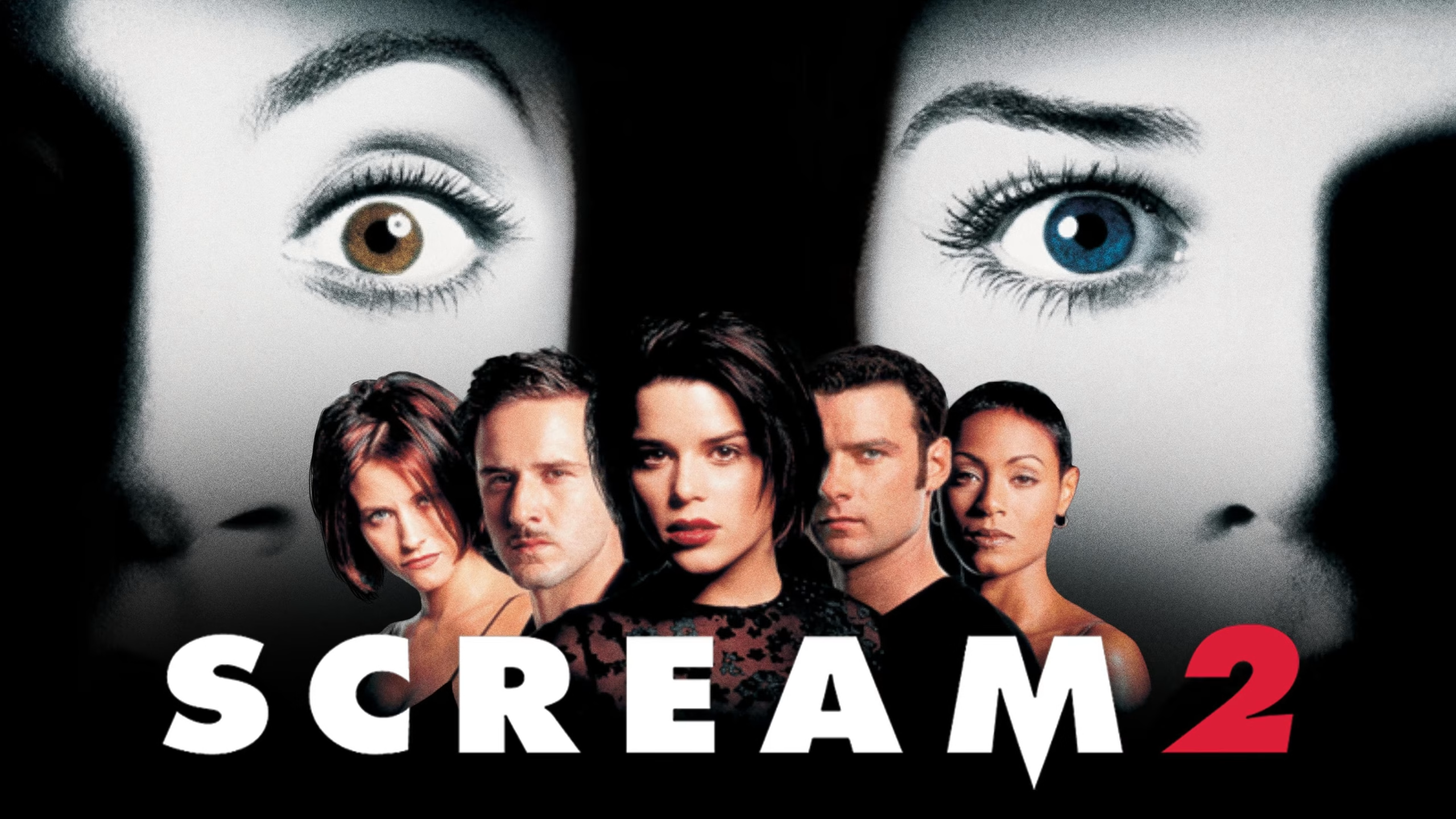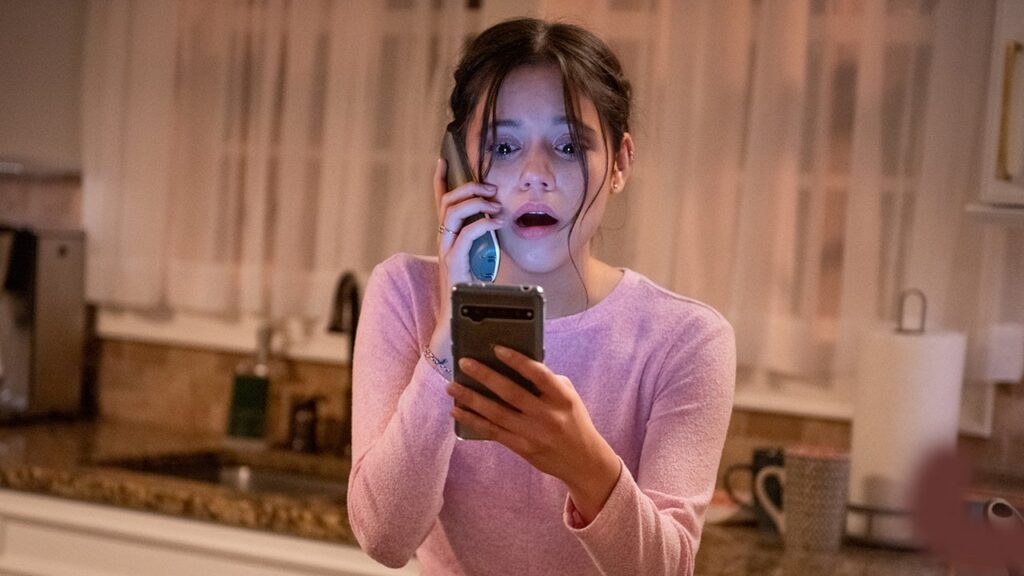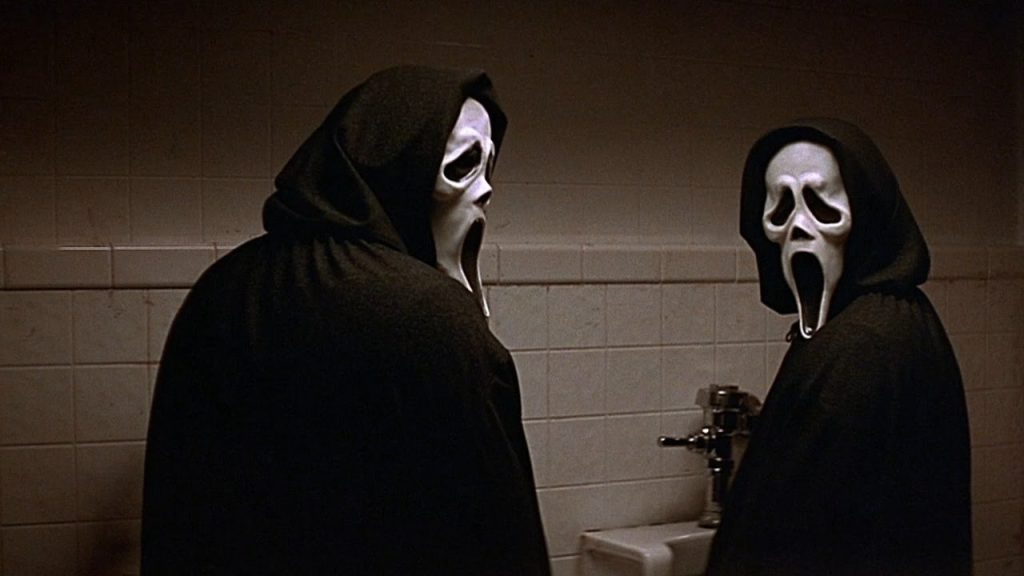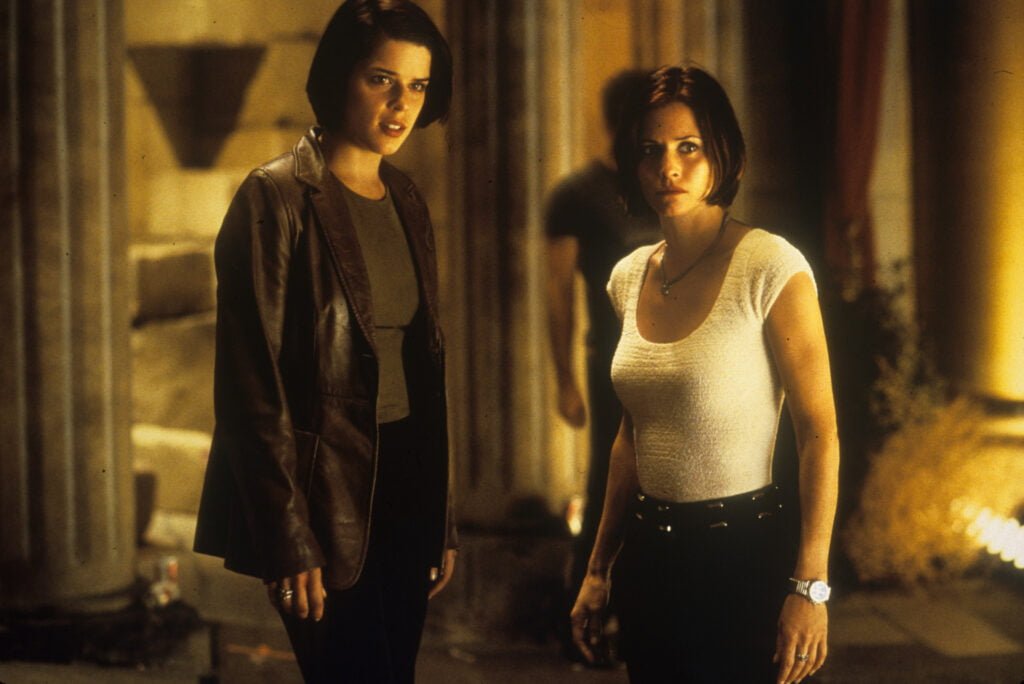Editorials
An Aging Millennial Horror Nerd Watched The Twilight Saga and This Is What Happened

I watched all of the Twilight movies in one weekend. I watched them because I wanted to write this article about all the weird choices that went into one of the most profitable franchises from the last 20 years. I wanted to understand why so many people felt invested in a bloodless, sexless supernatural love triangle. I did all the research, I dug into the old fan forums. I sifted through old promo videos, box office records, and interviews. I tried to make this article a listicle, I tried to make it meta, but nothing was ever right.
This franchise is undefinable.
The First Twilight Movie: A Flawed Yet Profitable Start
Having watched all five movies, I can confidently say that the first movie is the best movie of the franchise. I did not like the first movie. I did not like how green it was, I did not like the way the camera framed everything at a dutch angle. I did not like how Edward the glittery vampire (Robert Pattinson) looked at Bella the high school student (Kristen Stewart). Is he farting? I thought, or is he cumming?? The special effects look incredibly cheap for a film based on an incredibly successful book series (in 2008, all three books were among the top 50-selling novels of the last 15 years).
Summit Entertainment’s Risky Bet on Twilight
This was Summit Entertainment’s first foray into a big franchise production, and they were not confident that the Twilight fanbase would make them money. “This could just be 400 girls in Salt Lake City blogging about it,” said one executive, according to director Catherine Hardwicke. She told the Daily Beast, “they said, OK, Sisterhood of the Travelling Pants was a very popular book for girls, and it made $39 million. That’s it. We don’t know if this could ever make us any more than that, so we don’t really want to spend more than that.” Hardwicke made her movie for $37 million, and Twilight pulled in $69 (nice) million on opening weekend. Hardwicke was not invited back to direct the sequels.

Twilight Sequels: Bigger Budgets, Worse Effects
The next four movies, which barely have a plot, continued to print money for Summit. New Moon made back its budget plus $22 million in profit in days, and Eclipse made even more – the $68 million movie broke even from Wednesday night ticket sales alone. The special effects continue to be mind-bogglingly bad. Sometimes the vampires have white faces, but their necks and ears have human skin tones.
Jacob’s Problematic Portrayal and Lackluster Romance
And I don’t like Jacob at all. I don’t like that the studio cast a white actor to play an indigenous character, and his abs never make up for his shitty attitude. Both Jacob and Edward are awful to Bella, in fact, everyone in this story is so patronizing and controlling. Where is the sexual tension? I keep thinking. Where is the romance?
Breaking Dawn’s Shocking Turn and Controversial Themes
Breaking Dawn Part 1 takes a wild turn in the final 20 minutes. There is actual violence and gore! There’s blood in this movie! Some characters justify some wild choices in very problematic ways (if you know, you know), and there is a baby with a nightmare CGI face. There’s an abstinence arc, an anti-abortion arc, and in Part 2, there’s a massive fight scene that doesn’t look half bad. Everything ends with Bella and Edward lying together in the sun, happily ever after (though they forgot to add the sparkling diamond skin effect).

Twilight’s Cultural Flaws: From Appropriation to Abuse
There is so much to hate about this franchise. The appropriation of indigenous culture, the anti-choice conservative messaging, and the abusive relationships that are branded as loving and romantic. The very bad special effects! Even the stigma of Twilight supposedly being for ‘silly’ teen girls couldn’t stop the Twi-hards tying their identities to these movies (“are you Team Edward or Team Jacob?”).
The Robsten Phenomenon: Blurring Fact and Fiction
When Kristen Stewart and Robert Pattinson started dating on the first movie set, their on-again, off-again relationship blurred fact and fiction, sending the fan base into a frenzy. In 2016, long after both actors had moved on, Stewart spoke candidly about that time in a profile for The New York Times Style Magazine. “People wanted me and Rob to be together so badly that our relationship was made into a product.”
Toxic Fandom: The Dark Side of Robsten Obsession
Some fans continued to believe the two were a couple as late as 2020. I dipped my toe into the Robsten (Robert-Kristen) conspiracy blogs, where people believe the two are actually secretly married with multiple children. Any mention of Stewart’s subsequent female partners is dismissed as a misrepresentation of female friendship, and any woman who dares to date Pattison gets met with a barrage of online harassment.
F.K.A Twigs and the Racist Backlash
No one got it worse than singer F.K.A Twigs, who dated him in 2014. “Whatever I did at that time, people would find pictures of monkeys and have me doing the same things as the monkeys,” she told Louis Theroux on his Grounded podcast. She even started to view herself from their racist lens whenever she saw pictures of herself, thinking that she needed to “hide this monkey-ness that I have, because otherwise people are gonna come for me about it.” In one ‘popular’ Robsten blog, they go so far as to refer to Twigs as “IT.” I tried to understand the source of the nickname, but honestly, I had an easier time understanding Qanon lore, and I didn’t need any more brain damage.

Twilight’s Failure to Embrace the Female Gaze
The biggest problem with these movies that isn’t tied to the original books, is that they fail to embrace or celebrate the female gaze. Bella is intentionally bland and vague because she’s a stand-in for the reader, which is fine. It is an easy way for audiences to insert themselves into a romantic fantasy where two buff dudes fight for her affection. But the men who made these movies, aside from the first one, seem ashamed of its subject matter as if a story for girls holds any less value than a boy with a magic wand.
Missed Opportunities in Visual Storytelling
There is no focus on eyes or touch, and the camera barely lingers on the male body, even though the werewolves all spend A LOT of time shirtless (no bare butts in sight, though). It’s all very safe, very PG, even though the men constantly talk about their ability and desire to harm Bella physically.
The Paradox of Twilight: A Billion Dollar Legacy
This is the paradox of Twilight. It’s a fantasy full of darkness that never quite manifests, safe for people who don’t think they can have a dark fantasy of their own. Vampires glitter in the sunlight, and werewolves never shed any blood – abuse isn’t actually abuse; it’s love. Twilight is the first half of Mulholland Drive before everything flips and the filth lurking behind the dumpster bursts to the surface. It’s a cheap Hollywood lie, selling bland passivity as desire and romance.
But none of these things matter, because no matter how ridiculous, harmful or cheap this franchise is, The Twilight Saga has made over 3.3 billion dollars since 2008. I don’t know what else to say.
Editorials
‘The Woman in Black’ Remake Is Better Than The Original

As a horror fan, I tend to think about remakes a lot. Not why they are made, necessarily. That answer is pretty clear: money. But something closer to “if they have to be made, how can they be made well?” It’s rare to find a remake that is generally considered to be better than the original. However, there are plenty that have been deemed to be valuable in a different way. You can find these in basically all subgenres. Sci-fi, for instance (The Thing, The Blob). Zombies (Dawn of the Dead, Evil Dead). Even slashers (The Texas Chainsaw Massacre, My Bloody Valentine). However, when it comes to haunted house remakes, only The Woman in Black truly stands out, and it is shockingly underrated. Even more intriguingly, it is demonstrably better than the original movie.
The Original Haunted House Movie Is Almost Always Better
Now please note, I’m specifically talking about movies with haunted houses, rather than ghost movies in general. We wouldn’t want to be bringing The Ring into this conversation. That’s not fair to anyone.
Plenty of haunted house movies are minted classics, and as such, the subgenre has gotten its fair share of remakes. These are, almost unilaterally, some of the most-panned movies in a format that attracts bad reviews like honey attracts flies.
You’ve got 2005’s The Amityville Horror (a CGI-heavy slog briefly buoyed by a shirtless, possessed Ryan Reynolds). That same year’s Dark Water (one of many inert remakes of Asian horror films to come from that era). 1999’s The House on Haunted Hill (a manic, incoherent effort that millennial nostalgia has perhaps been too kind to). That same year there was The Haunting (a manic, incoherent effort that didn’t even earn nostalgia in the first place). And 2015’s Poltergeist (Remember this movie? Don’t you wish you didn’t?). And while I could accept arguments about 2001’s THIR13EN Ghosts, it’s hard to compete with a William Castle classic.
The Problem with Haunted House Remakes
Generally, I think haunted house remakes fail so often because of remakes’ compulsive obsession with updating the material. They throw in state-of-the-art special effects, the hottest stars of the era, and big set piece action sequences. Like, did House on Haunted Hill need to open with that weird roller coaster scene? Of course it didn’t.
However, when it comes to haunted house movies, bigger does not always mean better. They tend to be at their best when they are about ordinary people experiencing heightened versions of normal domestic fears. Bumps in the night, unexplained shadows, and the like. Maybe even some glowing eyes or a floating child. That’s all fine and dandy. But once you have a giant stone lion decapitating Owen Wilson, things have perhaps gone a bit off the rails.

The One Big Exception is The Woman in Black
The one undeniable exception to the haunted house remake rule is 2012’s The Woman in Black. If we want to split hairs, it’s technically the second adaptation of the Susan Hill novel of the same name. But The Haunting was technically a Shirley Jackson re-adaptation, and that still counts as a remake, so this does too.
The novel follows a young solicitor being haunted when handling a client’s estate at the secluded Eel Marsh House. The property was first adapted into a 1989 TV movie starring Adrian Rawlings, and it was ripe for a remake. In spite of having at least one majorly eerie scene, the 1989 movie is in fact too simple and small-scale. It is too invested in the humdrum realities of country life to have much time to be scary. Plus, it boasts a small screen budget and a distinctly “British television” sense of production design. Eel Marsh basically looks like any old English house, with whitewashed walls and a bland exterior.
Therefore, the “bigger is better” mentality of horror remakes took The Woman in Black to the exact level it needed.

The Woman in Black 2012 Makes Some Great Choices
2012’s The Woman in Black deserves an enormous amount of credit for carrying the remake mantle superbly well. By following a more sedate original, it reaches the exact pitch it needs in order to craft a perfect haunted house story. Most appropriately, the design of Eel Marsh House and its environs are gloriously excessive. While they don’t stretch the bounds of reality into sheer impossibility, they completely turn the original movie on its head.
Eel Marsh is now, as it should be, a decaying, rambling pile where every corner might hide deadly secrets. It’d be scary even if there wasn’t a ghost inside it, if only because it might contain copious black mold. Then you add the marshy grounds choked in horror movie fog. And then there’s the winding, muddy road that gets lost in the tide and feels downright purgatorial. Finally, you have a proper damn setting for a haunted house movie that plumbs the wicked secrets of the wealthy.
Why The Woman in Black Remake Is an Underrated Horror Gem
While 2012’s The Woman in Black is certainly underrated as a remake, I think it is even more underrated as a haunted house movie. For one thing, it is one of the best examples of the pre-Conjuring jump-scare horror movie done right. And if you’ve read my work for any amount of time, you know how positively I feel about jump scares. The Woman in Black offers a delectable combo platter of shocks designed to keep you on your toes. For example, there are plenty of patient shots that wait for you to notice the creepy thing in the background. But there are also a number of short sharp shocks that remain tremendously effective.
That is not to say that the movie is perfect. They did slightly overstep with their “bigger is better” move to cast Daniel Radcliffe in the lead role. It was a big swing making his first post-Potter role that of a single father with a four-year-old kid. It’s a bit much to have asked 2012 audiences to swallow, though it reads slightly better so many years later.
However, despite its flaws, The Woman in Black remake is demonstrably better than the original. In nearly every conceivable way. It’s pure Hammer Films confection, as opposed to a television drama without an ounce of oomph.
Editorials
Is ‘Scream 2’ Still the Worst of the Series?

There are only so many times I can get away with burying the lede with an editorial headline before someone throws a rock at me. It may or may not be justified when they do. This article is not an attempt at ragebaiting Scream fans, I promise. Neither was my Scream 3 article, which I’m still completely right about.
I do firmly believe that Scream 2 is, at the very least, the last Scream film I’d want to watch. But what was initially just me complaining about a film that I disregard as the weakest entry in its series has since developed into trying to address what it does right. You’ve heard of the expression “jack of all trades, master of none”, and to me Scream 2 really was the jack of all trades of the franchise for the longest time.
It technically has everything a Scream movie needs. Its opening is great, but it’s not the best of them by a long shot. Its killers are unexpected, but not particularly interesting, feeling flat and one-dimensional compared to the others. It has kills, but only a few of them are particularly shocking or well executed. It pokes fun at the genre but doesn’t say anything particularly bold in terms of commentary. Having everything a Scream movie needs is the bare minimum to me.
But the question is, what does Scream 2 do best exactly? Finding that answer involves highlighting what each of the other sequels are great at, and trying to pick out what Scream 2 has that the others don’t.

Scream 3 Is the Big Finale That Utilizes Its Setting Perfectly
Scream as a series handily dodges the trap most horror franchises fall into: rehashing and retreading the same territory over and over. That’s because every one of its films are in essence trying to do something a little different and a little bolder.
Scream 3 is especially bold because it was conceived, written, and executed as the final installment in the Scream series. And it does that incredibly well. Taking the action away from a locale similar to Woodsboro, Scream 3 tosses our characters into the frying pan of a Hollywood film production. Despite its notorious number of rewrites and script changes (one of which resulted in our first solo Ghostface), it still manages to be a perfect culmination of Sidney Prescott’s story.
I won’t repeat myself too much (go read my previous article on the subject), but 3 is often maligned for as good a film as it turned out to be. And for all of its clunkier reveals, and its ghost mom antics, it understands how to utilize its setting and send its characters off into the sunset right.
Scream 4’s Meta Commentary Wakes Scream from a Deep Sleep
As Wes Craven’s final film, Scream 4 has a very special place in the franchise. It was and still is largely adored for bringing back the franchise from a deep 11-year sleep. With one of the craziest openings in any horror film, let alone a Scream film, it sets the tone for a bombastic return and pays off in spades with the journey it takes us on.
Its primary Ghostface Jill Roberts is a fan favorite, and for some people, she is the best to ever wear the mask. Its script is the source of many memorable moments, not the least of which is Kirby’s iconic rapid-fire response to the horror remakes question. And most importantly, it makes a bold and surprisingly effective return for our main trio of Sidney, Dewey, and Gale, whose return didn’t feel trite or hammy when they ended up coming back to Woodsboro for more.
Craven’s work on 4 truly understands the power its predecessors had exerted on the horror genre, both irreverent in its metacommentary and celebratory of the Scream series as a whole. The film is less of a love letter to the genre and more of a kicking down of the door to remind people what Scream is about. 4’s story re-established that Scream isn’t going away, no matter how long it takes for another film, and no matter how many franchises try to take its place.

Scream 5 & 6 Is Radio Silence’s Brutal and Bloody Attitude Era
Put simply, Scream 5 and 6’s strong suit was not its characters. It was not its clever writing. The Radio Silence duology in the Scream series excelled in one thing: beating the hell out of its characters.
Wrestling fans (of which there is an unsurprising amount of crossover with horror fans) will know why I call it the Attitude Era. Just like WWE’s most infamous stretch of history, Radio Silence brought something especially aggressive to their entries. And it’s because these films were just brutal. Handing the reins to the series, Bettinelli-Olpin and Gillet gifted a special kineticism to the classic Scream chase sequences, insane finales, and especially its ruthless killers.
All five of the Ghostfaces present in 5 and 6 are the definition of nasty. They’re unrelenting, and in my humble opinion, the freakiest since the original duo of Stu Macher and Billy Loomis. Getting to hear all the air get sucked out of the room as Dewey is gutted like a fish in 5 was still an incredible moment to experience in theatres, and it’s something I don’t think would have happened if the films were any less mean and any less explosively violent.

So, What Does Scream 2 Do Best Exactly?
So now, after looking at all these entries and all of their greatest qualities, what does Scream 2 have that none of the others do? What must I concede to Scream 2?
Really great character development.
Film is a medium of spectacle most of the time, and this is reflected in how we critique and compliment them. It affects how we look back on them, sometimes treating them more harshly than they deserve because they don’t have that visual flash. But for every ounce of spectacle Scream 2 lacks, I have to admit, it does an incredible job of developing Sidney Prescott as a character.
On a rare rewatch, it’s clear Neve Campbell is carrying the entirety of Scream 2 on her back just because of how compelling she makes Sidney. Watching her slowly fight against a tide of paranoia, fear, and distrust of the people around her once more, watching her be plunged back into the nightmare, is undeniably effective.
It’s also where Dewey and Gale are really cemented as a couple, and where the seeds of them always returning to each other are planted. Going from a mutual simmering disrespect to an affectionate couple to inseparable but awkward and in love is just classic; two people who complete each other in how different they are, but are inevitably pulled back and forth by those differences, their bond is one of the major highlights throughout the series.

Maybe All the Scream Films Are Just Good?
These three characters are the heart of the series, long after they’ve been written out. I talk a big game about how Scream 3 is the perfect ending for the franchise, but I like to gloss over the fact that Scream 2 does a lot of the legwork when it comes to developing the characters of Dewey, Gale, and especially Sidney.
Without 2, 3 just isn’t that effective when it comes to giving Sidney her long deserved peace. Without 2, the way we see Sidney’s return in 4 & 5 doesn’t hit as hard. All of the Scream movies owe something to Scream 2 in the same way they owe something to the original Scream. I think I’ve come to a new point of view when it comes to the Scream franchise: maybe there is no bad entry. Maybe none of them have to be the worst. Each one interlinks with the others in their own unique way.
And even though I doubt I will ever really love Scream 2, it has an undeniable strength in its character writing that permeates throughout the whole franchise. And that at the very least keeps it from being the worst Scream film.























